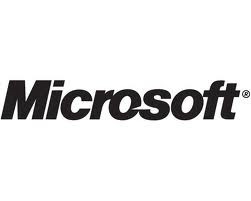Microsoft and its suite of products are used worldwide and more often than not businesses revolve around Microsoft Office. Given that it is central to the healthy running of not only companies but small businesses and home users, it is vital that all systems work efficiently and effectively. Moreover, it is important that people have adequate training and Microsoft help at hand. The kind of Microsoft Help that makes sense for them; the kind of Microsoft Help that is actually effective in resolving their issues.
Any problems with MS Office can be the cause of delays and maybe even vital business losses. After all, who has not had an Office glitch happen to them at their most important meetings? Microsoft Help therefore is pivotal to the day to day workings of thousands if not millions of office workers, be it at home or in the workplace.
It is oft said that "too much of a good thing can be bad" or to twist the saying, "too much of something can be quite confusing". I refer to Microsoft Help. Incorrect, inadequate and often half baked advice can lead to a great deal of frustration. Given that there is so much Microsoft Help out there, it would be good to review the various places where sound, comprehensive and most importantly updated Microsoft Help can be found.
As I mentioned earlier, there is plenty of Microsoft Help out there. In fact your Microsoft Office software package come preloaded with Microsoft Help. All you have to do is key in your questions and multiple possible solutions will be thrown up by Microsoft Help. Microsoft Help also provides inbuilt trainings that walk you through various packages.
Microsoft Help is available online at their official website and it provides comprehensive Microsoft Help quickly and easily. Microsoft support is also available to you via chat and online support forums on the same site. Another feature worth listing here is that you can chat to other Microsoft Help users. A sharing of problems often makes it easier to relate to one's concerns. Finally, one of the other advantages of using Microsoft Help at the official website is that their entire range of products is covered and all manner of updates are available in one centralized location. You can have your fun with web casts, pod casts, demos, online training and what have you!
However, some of us are not so good with using some of the Microsoft Help methods I mentioned above. We all use MS Office in some measure, ranging from expertise in all their packages to simple usage of MS word and maybe Excel and the occasional PowerPoint slide. What this also means is there are many users who are not 'Tech Savvy' i.e. the moment some technical jargon; detailed instructions, too much technology appear we throw up our hands in despair! While Microsoft Help is right there, on our systems and a click away on the Internet, it may not be something that many users are able to use. They find it confusing and complicated. Here is where I see, the second category of Microsoft Help stepping in; the more human face of Microsoft Help!
Here we can talk about Microsoft support which is also available to us via online tech support companies either remote or on the phone. There are several vendors who provide 24/7 service and can be your online savior for a small fee.
Today, you don't need to plod into training institutes because you need Microsoft Help or training on any of their products. You can make your choices right at home. Whether you choose to use Microsoft Help resources sitting right on your system, or via the office Microsoft Help website or through a preferred tech support company, just remember that Ubiquitous Microsoft Help is out there; you only have to choose!
Daisy is a technical and security specialist associated with multiple tech firms including iYogi. iYogi is synergistic ally aligned to offer computer support,computer repair microsoft help, computer support, tech support, hp support,dell support, spyware removal,computer help, to its clients in US, UK, Canada and Australia by Microsoft certified technician.
Microsoft Help is right there, on our systems and a click away on the Internet, it may not be something that many users are able to use. They find it confusing and complicated. Here is where I see, the second category of Microsoft Help stepping in; the more human face of Microsoft Help!
Here we can talk about Microsoft support which is also available to us via online tech support companies either remote or on the phone. There are several vendors who provide 24/7 service and can be your online savior for a small fee.
Source: http://EzineArticles.com/2247925





